Known as “Clown Birds” and “Sea Parrots”, due to their large colourful bills, Atlantic Puffins are one of the most adorable, if not the most, adorable birds I have had the luxury of photographing. While puffins spend most of the year at sea, they return to land for a short period of time, between April and August, for nesting.
There are four different species of Puffins, Atlantic, Tufted and Horned plus the differently named Rhinoceros Auklet (sometimes known as a unicorn or horn-billed puffin). Of these four species, the Atlantic Puffin is the one most commonly found in Europe. Over 90% of the world’s Atlantic Puffins are found within Europe, with 60% found in Iceland.
What’s the best time of year to see puffins?
In the UK, puffins normally nest on islands off the coast, between April to August (sometimes July). Starting in late April, the puffin will create a burrow where it lays just one egg. The eggs are incubated for around 40 days, and then upon hatching the chick lives in the burrow, where it fledges for a further 40 days. Sometime in July or August, when the chick is ready to leave the burrow, the Puffins return to the sea.
So for your best chances of seeing puffins, I recommend visiting Lunga during June or early July. This will ensure you’re visiting during the height of the breeding season, guaranteeing you will get to see lots of activity.
How to get to Lunga

Lunga is an Island located in the Treshnish Isles, part of the Inner Hebrides in Scotland. To access Lunga, you’ll need to go on a tour boat. There’s a selection of tours available, with different departure points and itineraries.
The boat tours will first stop off at Staffa (although some only go to Staffa), an uninhabited island where you can find some wildlife (including puffins) and Fingal’s Cave — a sea cave, that was created by a Paleocene lava flow, to create hexagonal basalt pillars (similar to those found on Black Sand Beach, in Iceland). You’ll then travel onto Lunga, where you get 2 to 4 hours on the island depending on the tour you choose to take.
There are two main tour companies offering trips to Staffa and Lunga – Turus Mara and Staffa Tours.
If your time in Scotland is limited and you don’t have time to spend a day visiting both islands, I recommend doing a multi-day tour such as this Iona, Mull, and Isle of Skye: 5-Day Tour from Edinburgh. Although this tour only visits Staffa, you’ll still have a chance to see some puffins between April and July. But there’s nowhere near as many, and further away than on Lunga.
I chose to visit Lunga with Staffa Tours. Staffa Tours has a few itineraries to pick from, but to visit Lunga you will want to pick their Staffa & Treshnish Isles Wildlife Tour, which departs from Tobermory or Kilchoan. This tour cost me £65 (as of 2019), for 1 adult and took 5 hours which consisted of 1 hour on Staffa, and 2 hours on Lunga.
If you want to spend more time on Lunga, then check out Turus Mara’s trips as they offer up to 4 hours on Lunga with their Big Bird Trip. These boats leave from Ulva Ferry on the Isle of Mull.
Some Tips on visiting Lunga and Staffa
Be aware, that the boat journey can be really chopping. Waves will come over the top, spraying anyone sat outside with sea water. Make sure to take a rain cover for your camera gear and a coat if you choose to sit outside. I personally use OP/Tech Rainsleeves, but there’s a huge selection of rain covers available.
On the boat I travelled on, they did have water proof jackets you could wear but this may vary depending on the boat or possibly due to covid restrictions.
If you experience seasickness I recommend speaking a pharmacist to see what anti-seasickness option is best for you. Some people like to wear a seasickness band or take anti-seasickness pills. But I always recommend confirming with a pharmacist that the pills are a safe option for yourself.
You can also try focusing on a steady point, that is in the distance on the horizon. Just sit, trying to relax while focusing on this point and you should be able to feel some relief.
There is a toilet on the boat, but this cannot be used when docked. Using the toilet while the boat is moving, is quite an experience and relies on having good sea legs. The toilet has a step into it, and is not at all accessible so disabled people with limited mobility might struggle. Make sure you use the toilet before you head off, to minimise the risk of needing it while on the boat. If departing from Tobermory, there are toilets (including an accessible one) in the harbour (there is a 20p charge), and there are toilets (including 1 accessible toilet) at Ulva Ferry. There are no toilets on Lunga or Staffa, so if you really do need to go, either hope you can hold it or you can test out your sea legs.
Does Lunga have wheelchair access?
Lunga and Staffa, plus the boats that travel to these islands are not accessible. The boat has step-only access, then the waves make the floor slippery and the toilet is tiny (with step only access). There’s uneven ground, and a really steep cliff to get up on Lunga. Plus the pontoon for Lunga is floating and moves as you’re trying to climb off the boat onto steps. Staffa has uneven rocks, steps and a really worn-out anti-slip path that goes over the hexagonal basalt columns.
I opted to struggle and crawled most of my way around Staffa and Lunga, and crawled up the cliff. I’d never want to advise anyone who has mobility issues, and health conditions that are triggered by strenuous activity, to go on one of these tours. Chances are you’d be really disappointed – or end up like me, worn out, injured, probably feeling really unwell and suffering for days after. The only reason I made it, was because 2 kind people stopped off to help me up to the cliff. Had they just walked past like everyone else, I may still be sat there wondering what I’ve got myself into. While I can say it was worth the struggle to see these awesome birds, even an off-road wheelchair wouldn’t be able to make along the basalt columns on Staffa or up to the cliffs on Lunga.
What to wear when visiting Lunga?
Due to how unpredictable Scottish weather can be, combined with waves coming over the top of the boat, I recommend preparing for the worst weather possible. While on the boat, they do supply some really good quality waterproof jackets if needed – but you will need your own coat once off the boat.
To make sure you’re well prepared, wear layers, as you can easily remove these if it warms up. I really recommend investing in a good raincoat, and hiking boots as while they’re not cheap, good quality gear will last you for years. For a good raincoat, I like North Face, and Craghoppers (UK only). For hiking boots, I personally like using Merrel’s hiking boots.
How to photograph puffins
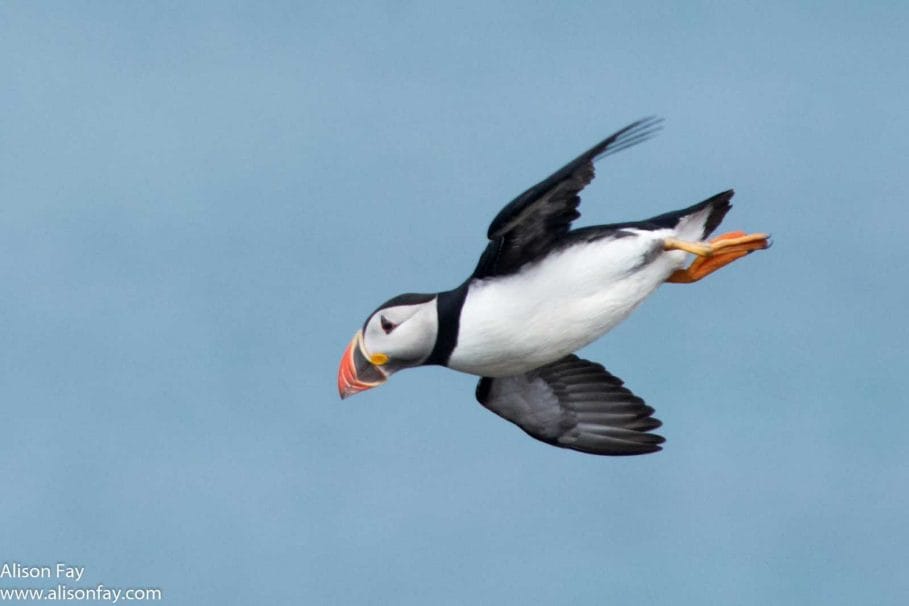
When on land, the puffins on Lunga are really close to you, you’ll only be a few metres from these gorgeous birds. You’ll also get to see the puffins flying, as they dive off the cliffs into the sea to catch fish. Please make sure you do not step on their burrows, or you will destroy an egg or kill their chick. Also, be aware that some puffins might have their burrows behind you, so if you see one looking a bit confused – try moving out the way and they may just run past.
You will most likely want to take with you, a DSLR, or mirrorless camera as these offer the most control but any camera that has a decent focal length and allows you to control the shutter speed will help. If you’re limited to a camera phone, don’t worry – the puffins are still close enough that you can capture some cute photos and videos.
Due to the close proximity when on the land, combined with the further distance when out at sea I recommend having a decent focal range, such as 70-300mm, or 50-500mm. I opted to use two cameras, one with a Nikon 70-200mm f2.8 VR ii, and the other with a Nikon 300mm f4 + Nikon AF-S FX TC-14E 1.4x teleconverter (putting me up to 420mm). This combination allowed me to use the 70-200mm range for the puffins that were on land, and the 420mm focal length for when the puffins were flying.
What settings to use?
You’ll need to set your camera’s shutter speed up high. Most of my photos were taken on at least 1/2000sec. Due to how unpredictable Scotland’s weather can be, you may have to bump up your ISO. Before visiting, I recommend testing out how high an aperture you’re happy to use before the images become too grainy. I personally, try to go no higher than 1600 but if you are using a full-frame camera, you might be able to go higher. The aperture you use will depend on what type of photos you’re going for, plus the weather.
If you’re unable to keep your ISO low enough, try opening up your lens more by increasing your aperture (and remember – smaller the f-stop, means larger the aperture so f2.8 is larger than f22).
If you wish to create a more blurry, out of focus background you’ll want to use a larger aperture – around f2.8 to f5.6. If you’re wanting more of the image in focus, you’ll need to increase this. I recommend f8 to f16 depending on how much sunlight is available.
To make things easiest, you can set your camera to the shutter priority mode, on Nikon and Sony (and some other brands), this is “S” and for Canon, it is “Tv”. I recommend setting it to 1/2000, and increasing or decreasing based on how well that works out for you.
If you’d like more control, then why not try manual mode? If you’re new to manual mode, make sure to practice before you leave for this trip and if in doubt, swap to shutter priority (or even automatic – as long as you get nice photos that you are happy with, it doesn’t matter if you use auto).
Here are some example settings for manual mode, that you can use to photograph puffins in different weather and lighting conditions:
Sunny day, with little clouds – ISO 100 to 400, f2.8 to f16, and, shutter speed: 1/2000 to 1/8000.
Cloudly day but not completely overcast – ISO 400 to 800, f2.8 to f8, shutter speed 1/2000 to f1/4000.
Completely overcast, miserable weather – ISO 400 to 1600, f2.8 to f8, shutter speed 1/2000.
If the available light is really poor, you could lower the shutter speed, but this would make it harder to photograph the puffins in flight. But I recommend sticking above 1/1200sec, as this is still fast enough to catch the lil guys walking around on land or landing.
Which focusing mode to use?
If you’re on a Nikon DSLR, or Sony Mirrorless, you’ll want to set your autofocus mode to AF-C.
If on Canon, set the autofocus mode to AI Servo.
For other brands, refer to your cameras manual for the name of the continuous focusing mode.
Composing the photographs
The composition isn’t something that can be taught within one blog post. The basic composition method is the rule of thirds, and most cameras will allow you to enable a grid overlay in live view or the electronic viewfinder to help you compose photos.
Below are some pointers to help you create some good photographs.

Position the puffins on the left or right side of the photograph, looking in towards the centre or towards the camera.
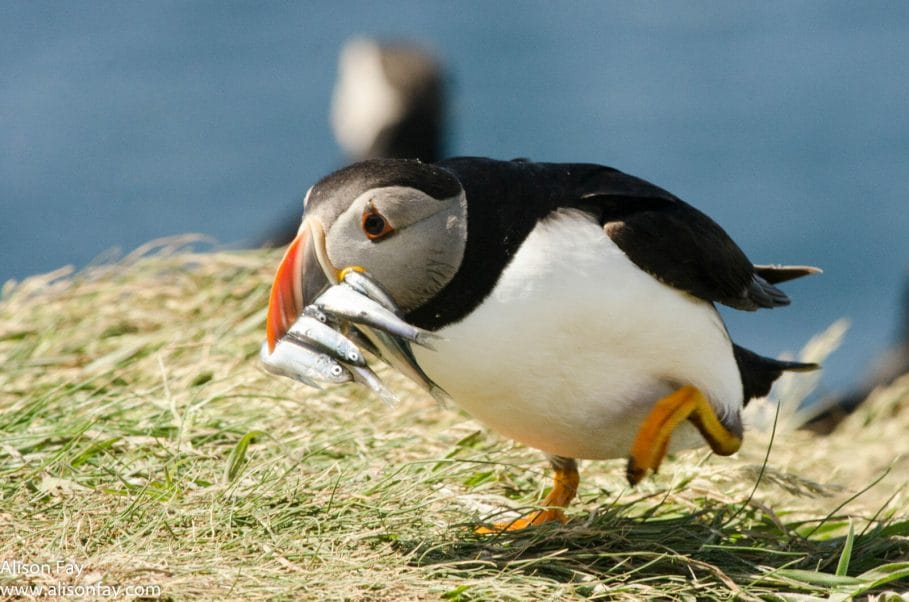
If a puffin is moving, try to photograph it with space for it to move into and a bit of space for where it came from. This helps give a sense of where the puffins going to head off to.

If photographing a pair or group of puffins, try to capture them interacting with each other.

When capturing the puffins in flight, try to give them some space to fly into. If landing, try to capture a bit of space below them, so they have room to land.

Remember that the rule of thirds is just a guideline, it is OK to centre your subject at times. Centre subjects work well for square crops.
Where to stay to visiting Lunga?
I recommend staying on the Isle of Mull, as this will allow you to explore this beautiful island and hopefully, you’ll get to see more than just puffins. The Isle of Mull is home to some amazing wildlife, including Golden Eagles, White-tailed Eagles (also known as Sea Eagles), and Otters. The island is accessible via ferry with Calmac.

If you don’t have a car, you can always take the train to Oban and cross as a foot passenger. There is a bus from Craignure (where the ferry lands) to Tobermory, plus some buses around the island. Just make sure to check the time tables and be careful not to miss the last one back to your accommodation. If you want to camp, there’s plenty of places you can book into, starting at £5 a night, plus wild camping is legal in Scotland (within limits, please refer to the rules, and please don’t break them).
During my time on the island, I opted to stay in Tobermory at Achafraoich B & B. This cost me £200 for 4 nights, with breakfast. The owners of the B&B were very welcoming and helpful during my stay. Breakfast was enjoyable with plenty of options available (cereal, fresh fruit, traditional Scottish breakfast).
For other accommodation options on the Isle of Mull, you can search below or view the map.
Other places to see Puffins in The UK
Shetland Islands, Scotland
There are 3 great places in the Shetland islands where you can photograph puffins. These are, Sumburgh Head RSPB, Hermaness Nature Reserve and the Isle of Noss.
Of these, Sumburgh Head is the easiest to get to and probably one of the better places to go if you have a mobility-related disability. Located on the Shetland Mainland, the area is accessible via car with free parking and some disabled parking spots. The buildings within Sumburgh Head are accessible with level access or elevator access, and there is a path to help get you between the Foghorn tower and the Radar Hut. Although, they do advise these are not necessarily suitable for wheelchair users. For more information on their accessibility, make sure to contact them before visiting. Contact information is available here.
Sadly, the number of puffins in the Shetlands area has dropped. In Sumburgh Head alone, there were over 30,000 recorded in 2000 and only 570 left in 2017. But, it’s still one of the best places in Scotland to see them after Lunga.
Looking for somewhere to stay on the Shetlands? Then use the map below to find your perfect accommodation.
St. Kilda, Scotland
The biggest Puffin colony in the UK is located on St. Kilda, with over 250,000 puffins nesting on the islands. Getting to St. Kilda is difficult, although not impossible. These islands are over 100 miles out to sea, with no ferry service available. There are tours available through Go to St Kilda, and this is probably the easiest way to visit these remote islands. Tours start at £125 per person (as of 2019).
The Farne Islands, England
The Farne Islands is located off the coast of Northumberland and is accessible via four different tour companies that leave from a seaside village, Seahouses. There are four boat companies that offer tours to the island, these are:
Billy Shiel’s Boat Trips who land on Inner Farne and Staple Island, plus they offer All day bird trips for £40 per adult.
Golden Gate, who land on Inner Farne, Staple Island and Longstone. Golden Gate is currently the only tour company that is licensed to land on Longstone, so if you really want to visit there – make sure to book with this company.
Serenity, who land on Inner Farne and Staple Island. Serenity does state they have some level of wheelchair access to their boats. There are restrictions based on tidal height, wheelchair width + weight etc. So make sure to contact them before booking, but this does mean there is still a chance for those of us with disabilities to see puffins (although the Farne Islands themselves are not that accessible).
St Cuthbert, who land on Inner Farne and Staple Island. They also offer non-landing trips. This company does mention that their boats are not very accessible for wheelchair users and that they’re unable to lift passengers onto the boat.
I recommend staying in Seahouses, as this will give you easy access to the boat.
Use the map below to find accommodation in the area.
Skomer Island, Wales
Located off the coast of Pembrokeshire, Skomer Island is a great place to see puffins. This is one of the best places to visit in the UK, and is really popular with photographers from South-West England as it is quicker to get to than The Farne Islands or Scotland. There is a landing limit, of 250 people per day, and tickets are done on a first come first serve basis, so you do have to arrive early and queue up for the boat. The island can be visited between April to 30th September, with boats leaving Martin’s Haven at 10 am, 11 am and 12 noon.
Skomer is not accessible, as it has 87 steep uneven steps to climb. If you are unable to climb up the steps, why not opt for a cruise around the island instead? Dale Sailing offers tours and cruises through Pembrokeshire islands, here. You’ll need to contact them to discuss accessibility options, as there is no information online.
You also have the option to stay on Skomer, however, you need to book accommodation early as it sells out fast. Members of the Wildlife Trust of South & West Wales, get priority on the accommodation, and bookings for the following year normally start in October.
More information on visiting Skomer can be found on The Wildlife Trust of South & West Wales website.
 Lundy Island, England
Lundy Island, England
Located in South-West England, off the coast of England this little island is the only place in the South of England that has a puffin colony. The island is accessible by a 2-hour boat trip that goes through the Bristol Channel. You’ll get between 4 to 6 hours on the island before you need to return or be stranded for the night. Day returns cost £40 for adults. During winter, you can visit the island via helicopter, costing £125 per adult for a return journey.
It is possible to stay on the island. There is self-catering accommodation, and camping available. Due to how remote Lundy is, you may have to bring your own bedding and you’ll have no electricity between midnight and 6am. There’s no landline telephones, radios or TVs in the accommodation and you’ll probably be without phone signal. This makes Lundy the perfect destination for a disconnected holiday. If you choose to visit Lundy, please remember to bring all your rubbish back with you. There are limited rubbish collection services for the island, so please respect the area. Don’t litter or leave rubbish behind.
If you have any accessibility needs, make sure to phone The Landmark Trust before booking accommodation or the boat to check what accessibility measures they have in place. Lundy itself isn’t that accessible, due to the uneven ground. But the good news is that since 2018, there has been a tramper (off-road mobility scooter) available on Lundy Island. This is thanks to Countrysidemobility, who worked with Lundy to make the island more accessible. There is a fee, £20 for 1 day and £40 for a week. As there’s only one tramper available, make sure to book well in advance to ensure you can have it for your visit.
For more information on accessibility on Lundy, check our Euan’s Guide, and Countrysidemobility.
If you found this guide helpful, please share it on Pinterest.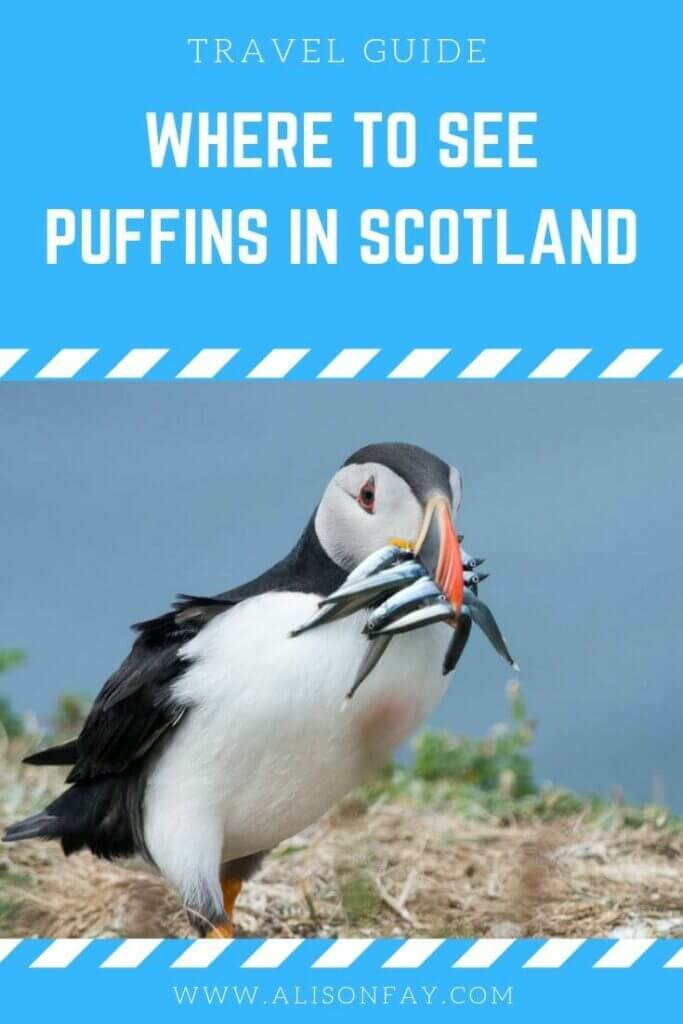

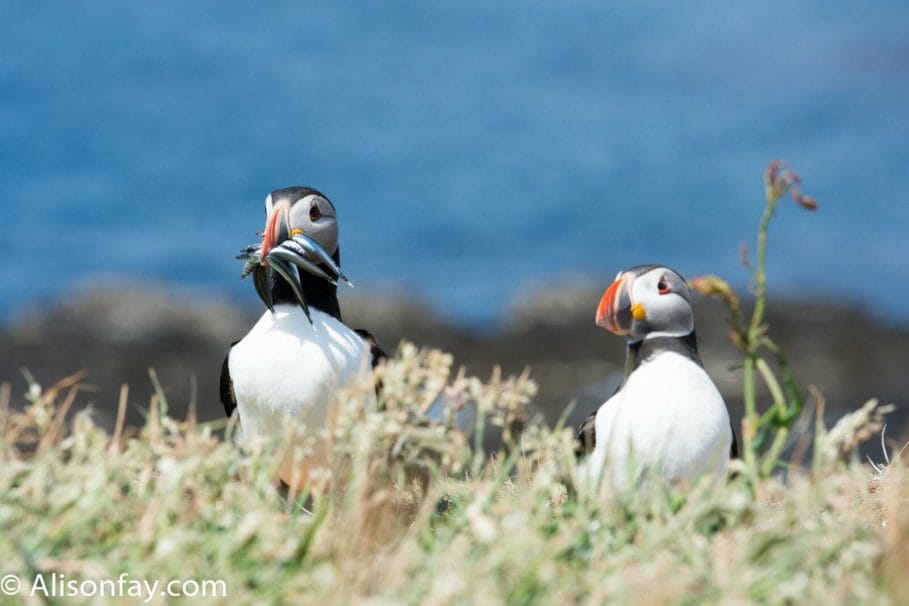 Lundy Island, England
Lundy Island, England
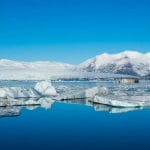
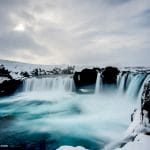
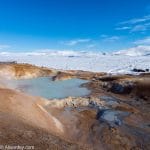
Everything about this post made me smile! Great photos! This trip is on my bucket list….
Such an amazing post !! I am inspired by your work and got some great ideas. It really gives me information that I am looking for. Thanks and keep sharing
Thank you 🙂
Thanks 🙂
What an amazing experience and tough on you! I only recently discovered that there were puffins in Scotland and now I very, very much want to go!
How beautiful it is! I never knew about them birds! Loved loved loved this post. We indeed live in a beautiful world.
Puffins such a innocent bird and great photos as well appreciate your work